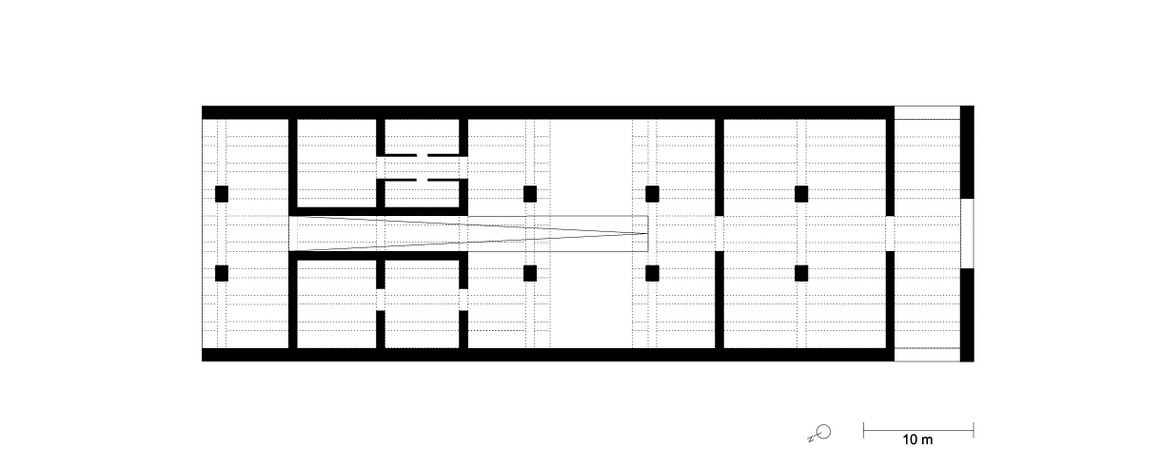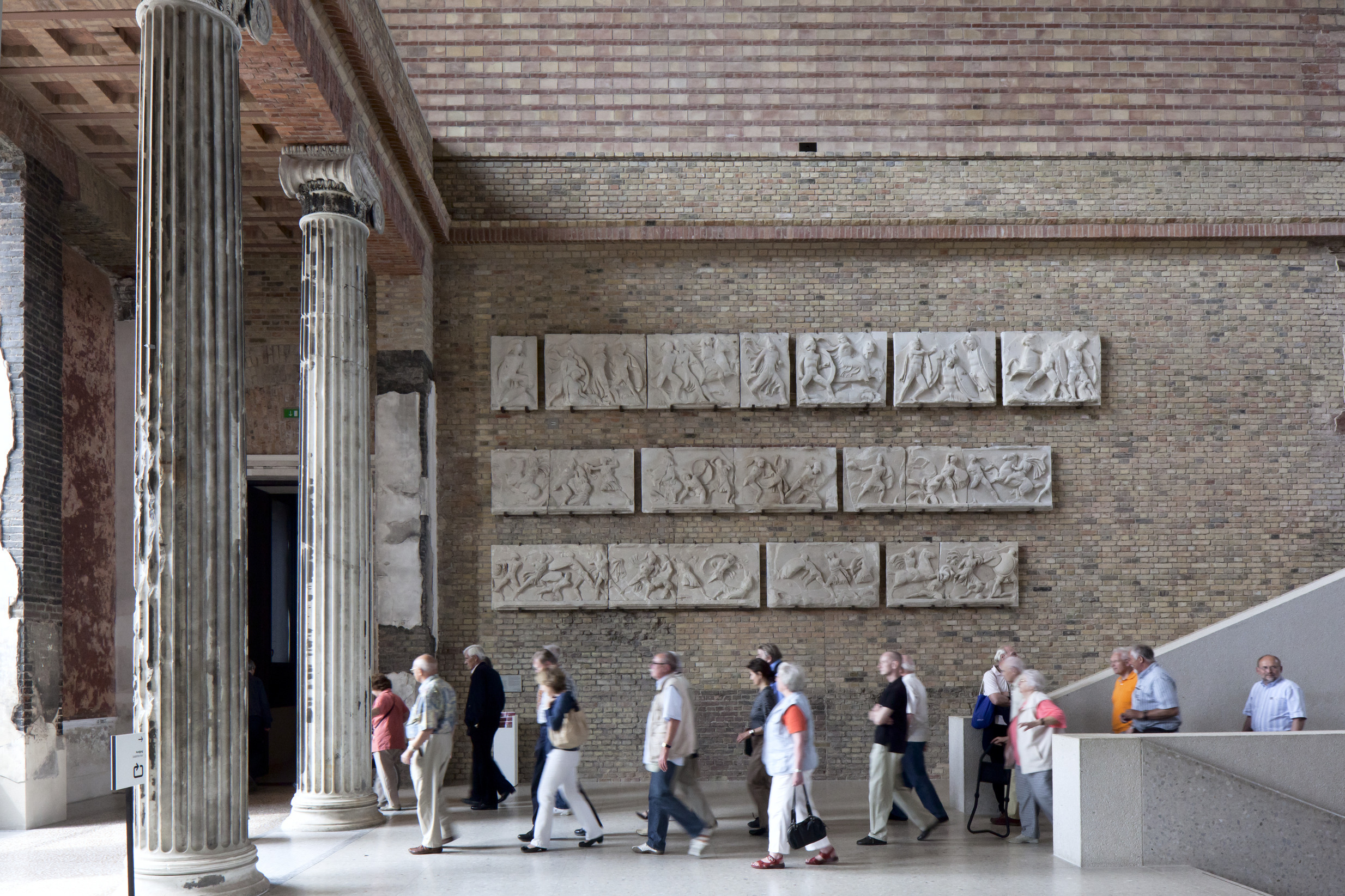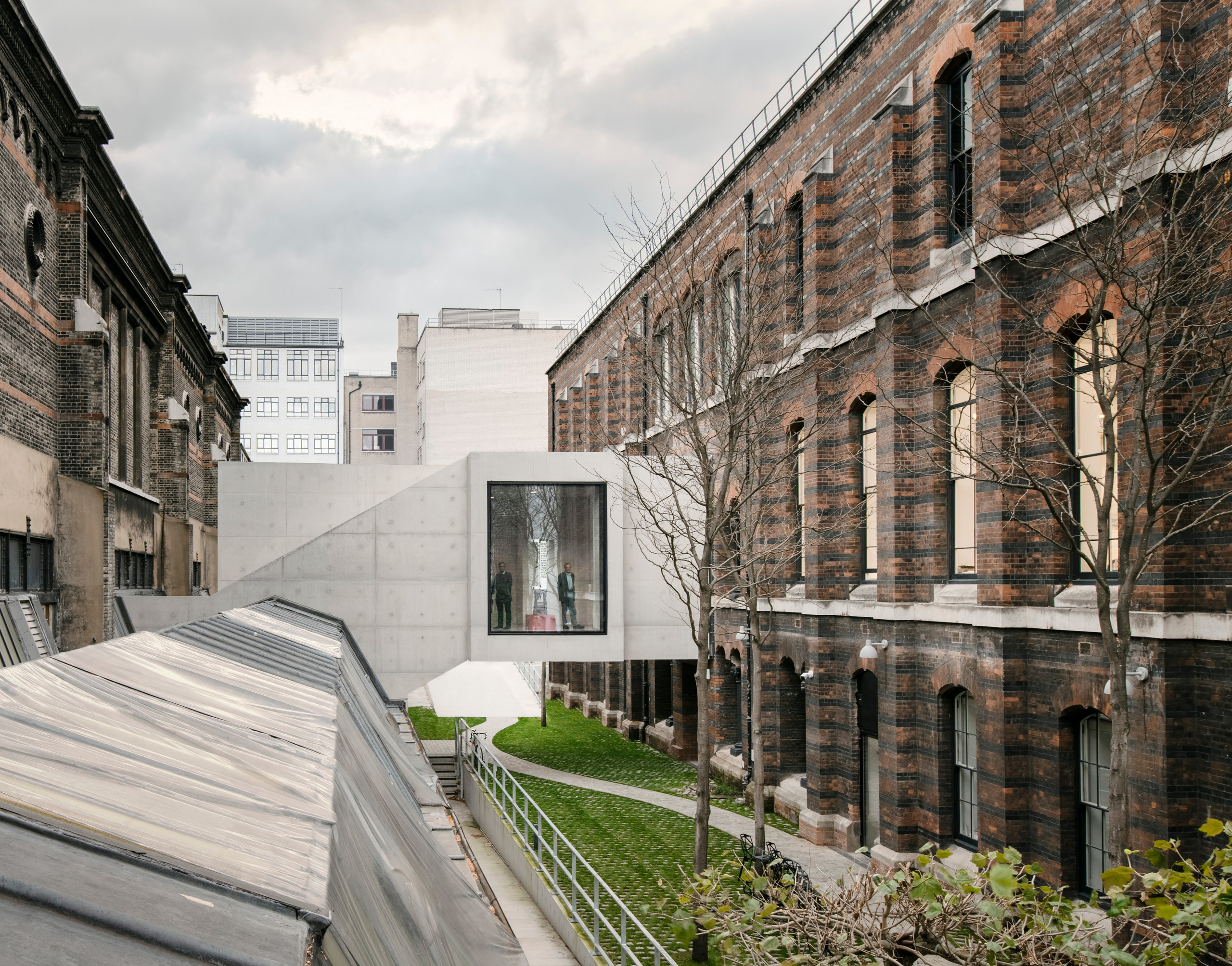Naga Site Museum
Naga, Sudan
2008
Naga, the southernmost of the ancient world’s most notable sites, lies approximately three hours’ drive to the north of Khartoum and is only accessible via sand tracks. At the foot of the Jebel Naga mountain and situated near a wadi, a valley in the desert, Naga was a religious centre during the Meriotic Empire (approximately from 300 B.C. until 300 A.D.), to which the remaining temples bear impressive witness. With the exception of an artesian well, where Bedouin herders bring their animals to drink, a small watch house and a temporary archaeologists’ building for the ongoing excavations, the area appears completely unspoiled.
In order for the transportable finds to be stored in situ, an excavation museum is to be erected. A site was chosen at an appropriate distance from the Temple of Amun so as not to interfere with the pristine setting of the temple ruins rising up from the sand.
The outer walls of the building are to be constructed of compressed concrete with local sand and aggregates. The more sophisticated engineering aspects of the roof structure are to be prefabricated. The system of prefabricated elements generates a wedge-shaped longitudinal section, forming a very simple spatial sequence that begins with an arrival loggia, a ramp, a courtyard, and an exhibition space with indirect illumination from the rooflight; and concludes with a viewing loggia. The building, completely without glass, is designed first and foremost to provide protection from sun, sandstorms, rain and looting.
Data and credits
- Project start
- 2008
- Gross floor area
- 1,400m²
- Client
- Verein zur Förderung des Ägyptischen Museums Berlin
e.V. & Qatar Sudan Archaeological Project - Architect
- David Chipperfield Architects Berlin
- Partners
- David Chipperfield, Martin Reichert, Alexander Schwarz (Design lead)
- Project architect
- Michael Freytag (Planning), Thomas Benk (Implementation)
- Project team
- Felix Buschinger, Elisa Giusti, Pascal Maas, Antonia Schlegel
- Structural engineer
- IGB Ingenieurgruppe Bauen, Karlsruhe








